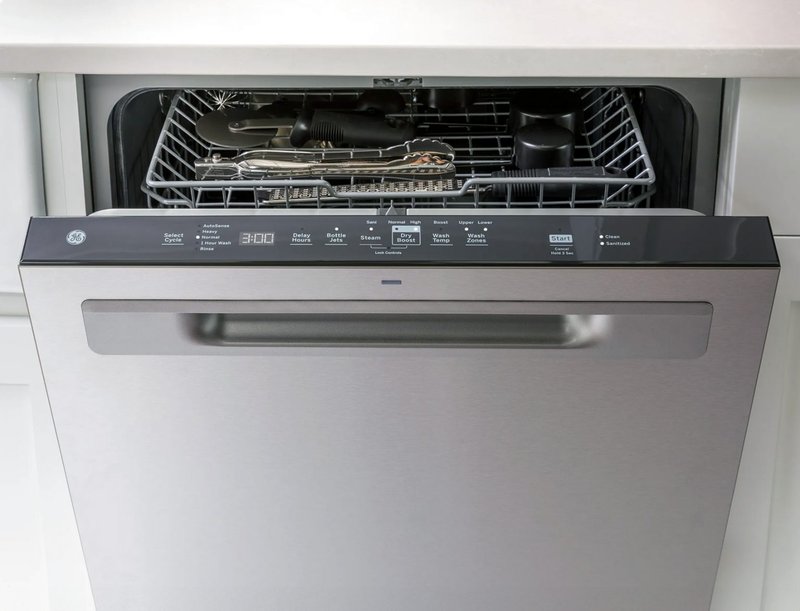
Your first instinct might be to reset the machine, hoping it’s just a digital hiccup. And you’re not wrong to think that way. A reset is like rebooting your computer when it’s acting up — it can clear minor glitches and give the machine a fresh start. But does it actually fix the F2 error? Well, it depends. This guide will walk you through what this code means, whether resetting is your golden ticket, and what your next steps could be if it’s not.
Understanding Error Code F2 on GE Dishwashers
When your GE dishwasher flashes the F2 error code, it’s the machine’s way of alerting you to a problem with the water draining process. Essentially, your dishwasher is saying, “Hey, the water’s not getting out like it’s supposed to!” Think of it like a clogged bathtub; that water’s just lingering and needs somewhere to go. This isn’t just an inconvenience — standing water can lead to unpleasant odors and possibly further damage if unresolved.
The F2 code usually suggests that there’s an issue with the drain hose, a blockage in the line, or something amiss with the pump. Sometimes small food particles, grease, or even foreign objects like plastic can create blockages, much like how hair clogs a shower drain. In other cases, it could be a kinked or damaged drain hose causing the problem, similar to stepping on a garden hose and preventing the water from flowing.
Understanding the root cause is key to resolving the issue. Before assuming the worst, remember that many users have found relief simply by addressing these drainage issues. As we move through the article, we’ll look at what action steps you can take to see if a reset will do the trick or if further investigation is needed.
Will Resetting Your Dishwasher Solve the Problem?
Here’s the deal: resetting your GE dishwasher can sometimes resolve the F2 error, but it’s not always the silver bullet. Think of resetting like giving your dishwasher a quick nap; it might wake up feeling refreshed, but if there’s an underlying problem causing the F2 error, it’s likely to pop up again. Resetting is your first go-to because it’s easy and non-invasive — like turning your phone off and back on when an app freezes.
To reset, you usually have to press and hold the Start/Reset button for a few seconds, or turn off the circuit breaker if that doesn’t work. After waiting a couple of minutes, power up the dishwasher again. If the F2 code doesn’t return, fantastic! You might have had a minor glitch. If it does, it’s time to roll up your sleeves and dig a little deeper into the plumbing of the machine.
If resetting doesn’t work, don’t panic. It’s a straightforward clue that a bit more hands-on approach is required. This might mean checking for clogs, inspecting the hoses, or investigating further components. Resetting is a great first step, but it’s not always the end of the journey for resolving error code F2.
What to Do If Resetting Doesn’t Work
So, resetting didn’t solve the problem? Don’t throw in the towel just yet. Let’s talk about what comes next. If the F2 error code persists, it’s time to get to the bottom of the drainage issue. First, make sure there aren’t any visible obstructions or kinks in the drain hose; a smooth and clear path is crucial for proper water flow. Check the hose for any signs of wear or damage — a replacement might be in order if it’s showing its age.
Next, inspect the area where the dishwasher drains. You’ll want to ensure there are no blockages, which could be as simple as food debris or built-up grease, much like unclogging a kitchen sink drain. A small bristle brush can help clear out gunk, allowing water to flow freely once more. If you’ve got a dishwasher with a removable filter, give that a good clean, too — just like changing the air filter in your car.
If you’ve tackled these tasks and the code is still vying for attention, the drain pump might be the culprit. This is a bit more technical, like lifting the hood of your car to check the engine. You might feel comfortable handling this on your own, or it might be time to call in a professional. Either way, addressing the F2 code is crucial to prevent potential water damage or further complications down the line.
Preventing Future F2 Error Codes
Nobody wants to deal with persistent error codes. So, how can you avoid seeing the F2 pop up again? Maintenance is key. Regularly clean your dishwasher’s filter and ensure it’s free from residue. Think of it like brushing and flossing; a little daily care prevents bigger issues. Also, regularly check the drain hose for kinks or damage.
Using the right detergent plays a role, too. It’s like fueling your car with the correct type of gasoline — too much suds can lead to more residue, leading to potential blockages in the system over time. Consider running a special cleaning cycle monthly using a dishwasher cleaner to flush out any build-up.
Taking these preventative steps not only helps keep the F2 code at bay but also ensures your dishwasher runs efficiently, providing spotless, sparkling dishes every time. If you’re ever in doubt, consulting the user manual or seeking professional advice is always a wise move. Remember, staying on top of maintenance is the easiest way to keep your dishwasher trouble-free.